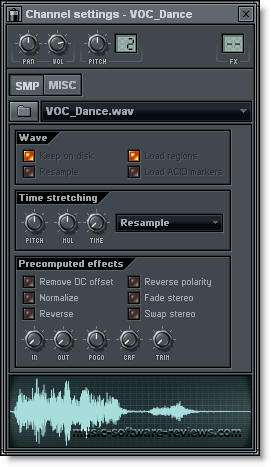

However, this small margin of difference is a testament to how well both programs perform overall, making them both an excellent choice for pros and novices alike. FL Studio earned 4.5/5 stars, while REAPER trailed behind with 4.3/5.
FL STUDIO KEYS FROM WAV LOOP SOFTWARE
Why: FL Studio wins a surprising upset over REAPER according to raters on G2, one of the most trusted software comparison platforms on the web. REAPER is also an excellent mixing machine, but for beginners who want to dive into the mix right away without any configuring, FL Studio is the clear winner here. Thanks to its 60 built-in sounds, massive library of loops, and extensive library of virtual instruments, FL Studio is truly built to be a one-stop-shop for live or studio mixing. Why: Ok, here’s an area where FL Studio really shines. It’s also an impressively stable platform, which is critical when working with live recording. 
Its MIDI Overlay feature also makes it easy to link keyboard shortcuts to important commands for live editing during recording sessions.
Why: Again, REAPER’s limitless customization options and powerful studio tools make it the winner in the recording category. It also supports an unlimited number of editing tracks, which is a huge win for anyone who makes complex, multi-layer mixes. Why: Thanks to REAPER’s robust set of tools and unlimited workspace customizations, it stands out above FL Studio when it comes to general sound editing functionality. This isn’t to say that FL Studio doesn’t have high-quality support, but REAPER’s vast array of resources and robust community that are happy to jump in and solve other user’s problems edge it out in this category, especially for beginners. Why: Both platforms have excellent support teams, but the REAPER team has gone above and beyond to support their platform and answer any questions or problems that may arise. For those reasons, we’re giving overall ease of use to FL Studio thanks to its easy drag-and-drop interface and user tutorials that will help more novice users get to work faster. REAPER is pretty bare-bones to start, and you’ll need a basic understanding of how DAWs work to get it up and running. 
Why: This is a category that many users will argue over, but “ease of use” in this case will ultimately come down to how comfortable a user is with manipulating open-source software.It’s time to put these programs up against each other and see which ones excel in each of our key categories:







 0 kommentar(er)
0 kommentar(er)
